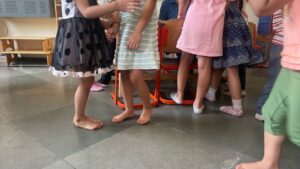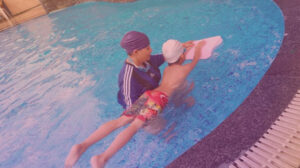IS IT POSIBLE TO BACK RUNNING AFTER REPALACEMENT
RUNNING AFTER REPALACEMENT
A joint replacement may be your ticket to a healthier and more active lifestyle. Once you recover, you can return to many activities that were too painful and difficult for you before surgery. One of the questions we get most often from patients is this: “Can you ever run after a joint replacement?” While we’d like to be able to provide a single definitive “Yes” or “No” answer it turns out it’s not as simple as all that. You might be able to, or you might not. That’s because the wear and tear tests the prosthesis is subjected to by the manufacturer cannot hope to perfectly match the stresses that will be brought to bear on the new joint by different individuals of different ages and different weights with radically different walks. As a result a definitive answer remains elusive.
Total knee or hip replacement should actually help a person become more active.
When it comes to total joint replacement, the traditional advice has been: “Wait for your joint pain to get unbearable. Wait until you are older. And, once you have the total joint replacement: Don’t exercise too much. And don’t run!” The fear behind those statements was that the joint replacement would work itself loose or wear out.
The current advice we give at our clinic: “Every year is precious. When possible, to use
biological knee.
The traditional cause of artificial joint replacement failures, in the absence of infection, is most commonly the loosening of the cement from the bone interface, and the wearing out of the plastic inserts or poor rehabilitation. Much of this observed loosening was due to the weakening of the bone (osteoporosis) as patient’s age and decrease their activities. But the only known effective way to build bone is by resistance exercise. Therefore, by increasing your weightlifting, cycling, skiing, and hiking, you decrease the chance of the component loosening by strengthening the bone. Additionally, the stronger the muscles are, the less force goes through the joint. Muscle absorbs force, guides more normal mechanics, and protects the joint. Increasing weightlifting increases muscle size more than any other activity.
In most cases, you can resume many of your normal activities after about 12 weeks. Be sure to check with your doctor before starting a new sport or physical activity. Together, you can make a plan for suitable exercises. Experts recommend staying active if you have osteoarthritis of the knee. Exercise can help:
- Strengthen your knee muscles and keep you mobile in the long term.
- Manage your weight
- Relieve stress
- Exercise and activity guidelines
After surgery, you may be looking forward to moving without pain, but nervous that you’ll damage your new knee joint if you participate in physical activity. Artificial knees are designed to mimic a natural knee. This means that, like a natural knee, they need exercise to function properly. Exercise will enable you to strengthen your knee muscles and help you maintain a healthy weight. Your doctor or physical therapist may recommend doing both of the following each day:
- Exercising for 20–30 minutes, 2–3 times.
- Walking for 30 minutes, 2–3 times
- In other words, you could be exercising for 2 hours each day.
- Your doctor will provide recommendations for activity based on your needs and overall health. In general, they will recommend low-impact exercises over high-impact versions that can add stress to your knees.
- Here are a few examples of low-impact activities and sports that you should be able to do once you recover from surgery.
- Aerobic exercises
- Walking. Is one of the best exercises you can do to build up strength in your knees. It’s also a good way to burn calories and benefit your heart.
- Start with smaller steps and shorter walks as you work your way up to longer distances. Keep track of how long you walk every day so you can gauge your progress. Consider using a pedometer to count your steps.
- Running is an aerobic activity like walking, but it’s should be start under a professional guidance.
- Swimming is not a weight-bearing activity, so it’s a great way to exercise without putting stress on your artificial knee. Other types of water exercises, such as aqua aerobics, hydrotherapy are also a good choice. Many people with knee replacements can resume swimming 3–6 weeks after surgery. But check with your doctor or physical therapist before diving into the pool.
- Dancing- Ballroom dancing and gentle modern dancing are great ways to exercise. Dancing is a good way to use leg muscles and engage in light aerobic activity. Avoid twisting and abrupt movements that could put your knee out of alignment. Also avoid high-impact movements such as jumping.
- Cycling is a good way to regain strength in your knee. Whether you use an actual bicycle or an exercise machine, stay on a flat surface and increase your distance slowly. Peddling backward on a stationary bike as you gradually gain your strength back. You can track your activity and time yourself to make it more challenging.
- Elliptical machines- These machines can provide a good workout without placing undue stress on the knees. As with cycling, your knees move in a circular motion, which means you can go for longer distances. An elliptical machine is a great alternative to running because you can move faster than walking, without the impact.
- Strength and flexibility training.
- Yoga- Gentle stretching is a great way to avoid stiffness, improve your flexibility, and boost the overall health of your knee. It’s important to avoid twisting movements, and it’s critical to protect your knees by keeping them aligned with your hips and ankles. Talk with your yoga instructor before class so they’re aware of your limitations. This will help prevent extra strain on your knee. If you feel any knee pain, modify the exercise or consider taking a break.
- Weightlifting- Lifting weights helps build strength and diminish knee pain. Your bones will also grow and become stronger if you practice resistance training. Use weights that are appropriate for your size and strength. Check with your doctor before engaging in a weightlifting program. If necessary, consult with a physical therapist or trainer to map out a regimen.
- Calisthenics- These basic exercises rely on simple, rhythmical movement and help build strength while increasing flexibility. Examples include crunches, pushups, squats and lunges.
- You should also consider gentle aerobics. These classes are available at physiotherapy center. Just make sure you do all exercise under proper guidance.
Joint replacement and running don’t naturally go together so you’ll need to proceed cautiously. It’s all depends on your rehabilitation. Once you have gained a modicum of strength in the joint you can start building more strength by swimming. Using fins will help you ramp up the intensity of your kicks which will further assist in rebuilding the hip and leg muscles you’ll need for running. When you are cleared by the physical therapist to begin running you’ll want to do so slowly and only on nice flat surfaces. You’ll also want to pay close attention to your stride. In particular you’re going to want to avoid twisting your new joint at all cost. You’ll also want to talk with your physical therapist about the best shoes to wear after joint replacement surgery.
Your physical therapist may also recommend using the stationary bike. This will help you strengthen the muscles of the hip and leg and serve to maintain flexibility in the hip and knee. The stationary bike typically carries little risk of damaging the new joint as long as you don’t push things too far too fast. You will likely feel some pain after each running session when you are starting out. This can be mitigated by icing the joint after each run. Make sure to rest and keep the surgically repaired joint elevated as you apply the ice to it.
REHABILITATE YOUR REPLACEMENT IN BEST PHYSIOTHERAPY CENTER IN DHKOLI….
As joint replacement is very critical thing to tackle after surgery and all your recovery depends on your physiotherapy rehabilitation. In replacement if you want to back in running it is only possible with the help of physiotherapy and an expert and experienced physiotherapist help you to cope up with situation. Blossom physiotherapy center is the best physiotherapy center in dhakoli with 100% of recovery rate. Dr.Jyoti Gupta (MPT pediatrics) that is a Pediatrics Physiotherapist as well as a certified Yoga instructor she complete her course from a well known YOGA ALLIANCE INTER NATIONAL is a head of the center and senior physiotherapist. She is having huge experience in the field and always come with positive outcome. She not only focus on physical rehab but also council the patient to cope up with situation in a very healthier manner. Blossom physiotherapy also provides yoga session according to conditions which help in early recovery and keep calm mind. Moreover they also have ultra-modular modalities which promotes and help in correct gain in waking pattern. Because replacement needs proper rehabilitation and time to time addition of various exercises according to your recovery and that is only guide by your physiotherapist. So in nutshell I recommend you to visit blossom physiotherapy center for rehabilitation and soon recovery. For further information log into Blossomphysitherapy.



